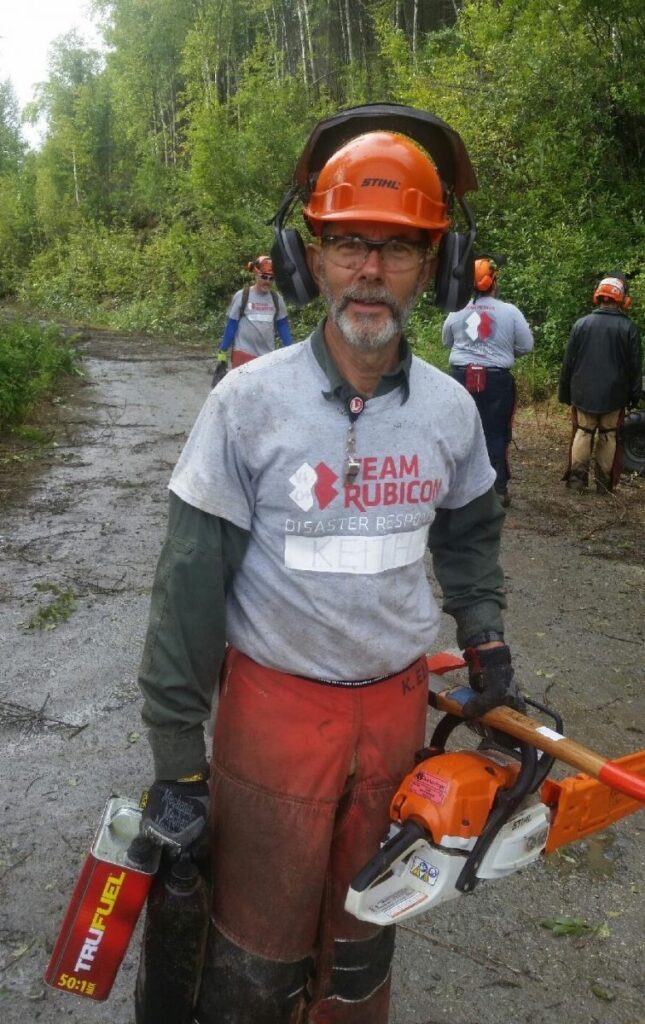I’d been in Livingston, Montana, for several days on Operation A River Raged Through It, Team Rubicon’s response to the June flooding of multiple Montana watersheds, when the team got word of unmet need in a community nearby.
In June, Team Rubicon had obtained reports of extensive damage in the Livingston area after historic 1-in-500-year flooding of the Yellowstone River caused by heavy rains and snow melt, and had stood up the Op there. But few or no reports had apparently come in by that time about Fromberg and Red Lodge, two towns farther east. So during our Op we were asked to recon.
Early the morning of July 7, Greyshirt David Howard and I proceeded eastward from Livingston to conduct that recon near Fromberg and Red Lodge which were inundated by flooding from the Rock Creek, a tributary of the Clarks Fork of the Yellowstone.
It was a tale of two cities.
The two communities are only 26 miles apart but couldn’t differ more. Fromberg is a very rural, agricultural town of roughly 450. Red Lodge is a tourist town of about 3,000 that sits at an entrance to Yellowstone National Park.
Fromberg was our first stop. There, we met local resident Tina Foust at city hall, a repurposed squat green building on the main street, two doors down from the town’s only bar and surrounded by several vacant buildings. Tina had nearly single-handedly collected flood damage information on dozens of residents in and around town. She knew everyone, and they knew her and her dad, Tim Nottingham, Fromberg’s mayor.
As we reconned the area, we quickly realized how under-resourced and under-served the town was. No VOADs were working in the area, all the recovery work done to that point had been done by the residents and their neighbors helping each other. And not just shared manual labor: tractors, trailers, dump trucks, etc. were all being freely shared as needed. And Tina was the acting coordinator for it all.
The flood waters had barrelled into the community flooding homes—many with basements—and the water was still standing in some homes more than two weeks after the disaster. Mold was growing rampant in many homes, making mold remediation the largest unmet need, followed closely by muck outs, flood debris management, home demolitions, and livestock fence repair and construction.
The town clearly needed extensive help. And yet, it was painfully obvious that much of the need—such as mold remediation and fence repair—was beyond Team Rubicon’s scope and ability.

After bidding Tina and Fromberg goodbye, it was on down the road to Red Lodge. Red Lodge, a town of about 3,000 residents, is commonly called the “Gateway to Yellowstone National Park” and tourism helps keep the town well funded. We were told Red Lodge had been able to invest more than $1 million in flood mitigation efforts ahead of actual flooding. Both Fromberg and Red Lodge had been impacted similarly by flooding, and both benefited more from their own residents helping one another than from any outside help. But the fact remains that Red Lodge reported being pretty much back to normal one week after the historic flooding, whereas Fromberg continues to struggle after a month.
From this Greyshirt’s perspective, the popularity of Red Lodge as a destination and its relative wealth as compared to Fromberg, ensured the publicity it received and its speedy recovery. Fromberg on the other hand will probably not see a million dollars in its coffers in that many years. The public will never know of Fromberg’s misery nor hear of Tina Foust and her heroism. And many, many more residents in Fromberg will lose their homes to mold and literally sinking into the ground than will in Red Lodge.
It’s a tale of two cities: One a big tourist town with the means to recover from a 500-year-flood; the other a small town out of the limelight that’s just scraping by. Scraping by with the help of the neighbors, and hoping somehow it will find a way to rebuild, recover, and return people to their homes sooner rather than later.
Whether or not Team Rubicon ends up standing up operations in Fromberg or any other community is not up to me, but I am proud to serve an organization that goes where the greatest need is, not where the greatest publicity is.



